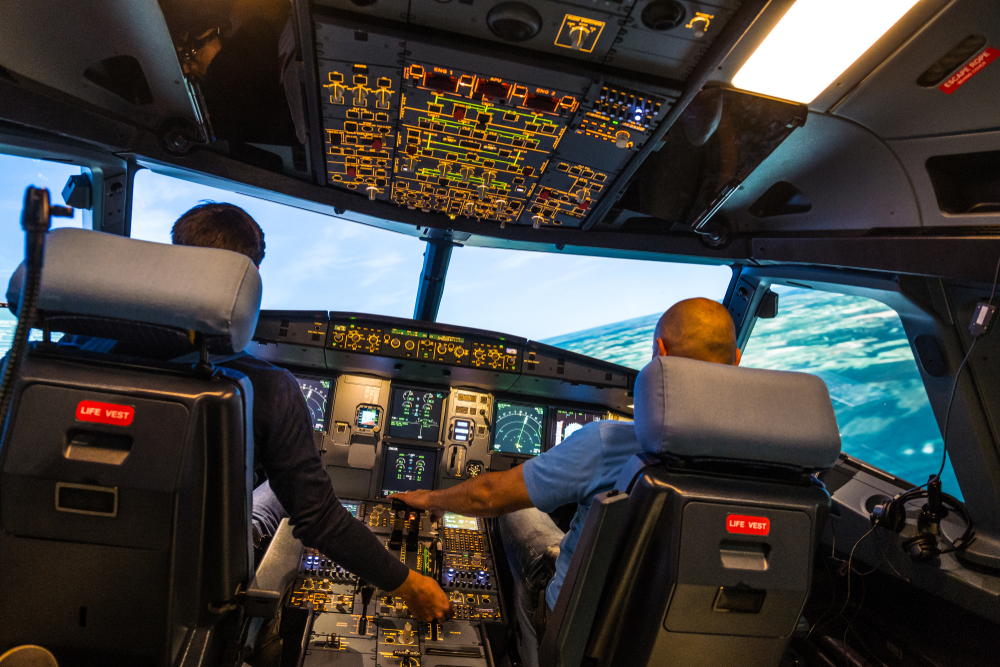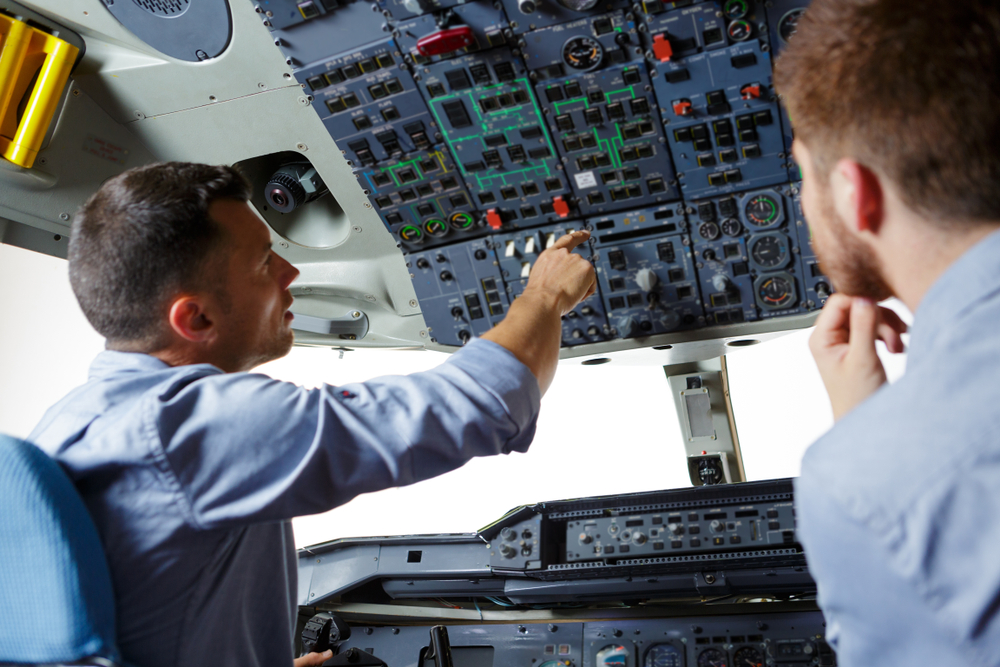Building a successful pilot career is a long-term journey that does not stop after earning your Commercial Pilot License (CPL) or Airline Transport Pilot License (ATPL). One of the most critical steps for any aspiring pilot is obtaining a Type Rating, a qualification that allows you to operate a specific aircraft.
But what exactly is a Type Rating, and why is it so essential for your aviation career? In this article, we answer the 10 most frequently asked questions about Type Rating that every cadet and future airline pilot should know.
Table of Contents
1. What is a Type Rating?
A Type Rating is an additional certification on top of the CPL or ATPL that qualifies a pilot to operate a specific aircraft type that requires specialized training beyond the standard pilot license. Aircraft that exceed a certain weight or have complex systems, such as commercial airliners, large turboprops, or business jets, require a pilot to obtain a Type Rating.
2. When would you need a Type Rating?
The requirement for a pilot to undergo additional training and certification to operate an aircraft not covered by a general pilot license is established by the International Civil Aviation Organization (ICAO) under Annex 1 – Personnel Licensing. ICAO provides the global framework, while individual civil aviation authorities apply and enforce these standards within their own countries.
So, how do you know if you need a Type Rating? In Europe, the European Union Aviation Safety Agency (EASA) regulates Type Ratings under Part-FCL (Flight Crew Licensing). According to EASA FCL.700, pilots must obtain a Type Rating when the aircraft they plan to fly meets certain criteria. These include a maximum certified takeoff mass exceeding 5,700 kilograms (12,566 pounds), turbojet-powered aircraft, or aircraft equipped with complex flight control, avionics, or engine systems.
Similar to Europe, in the United States, the Federal Aviation Administration (FAA) requires pilots to obtain a Type Rating in addition to their current license under 14 CFR § 61.31.
In essence, a Type Rating is not just a regulatory requirement but an essential part of building a pilot’s career because each aircraft type has unique handling characteristics, systems, and emergency procedures that require specialized training. Simply put, even if you hold an ATPL, you still cannot fly an Airbus A320, Boeing 737, Embraer E-Jet, or any similar aircraft without the appropriate Type Rating.
3. Who needs a Type Rating?
Any pilot intending to operate an aircraft classified as requiring a Type Rating by the relevant aviation authority must obtain this certification. This requirement applies to airline pilots who are transitioning to jet aircraft and corporate or charter pilots operating advanced business jets. It also applies to military pilots moving into civilian aviation with specific aircraft types.
Even experienced pilots with thousands of flight hours in their logbooks are required to complete a new Type Rating when switching to a different aircraft family. For example, pilots transitioning from Boeing to Airbus, or switching between different jet categories, must complete additional training. Regardless of experience, type-specific training is a must to ensure pilots are fully qualified to operate a commercial aircraft safely.
4. What does Type Rating training include?
A Type Rating course is divided into two essential phases: theoretical learning and practical training.
The first stage is ground school, where pilots dive deep into the technical knowledge needed to operate a specific aircraft. During this phase, they study critical aircraft systems, including hydraulics, electrics, avionics, engines, and flight controls. Pilots also learn about aircraft performance, standard operating procedures, abnormal situations, and emergency protocols to build a solid foundation of system understanding.
Once ground school is complete, the practical phase begins with Simulator Training. This takes place in a Full Flight Simulator Level D, which is the most advanced simulator standard currently available. It replicates the cockpit, handling, and behavior of the aircraft with remarkable realism. In the simulator, pilots practice both standard operations and complex scenarios such as system failures, engine malfunctions, severe weather, and emergency procedures. This hands-on experience ensures they are fully prepared for real situations.
After simulator training, pilots must pass a Proficiency Check where an examiner evaluates their ability to safely operate the aircraft in both normal and emergency conditions. For those under EASA regulations, this requirement is defined in FCL.725, while FAA-regulated pilots follow the guidelines set in 14 CFR section 61.58.
In most commercial airline environments, newly qualified pilots also complete Supervised Line Flying. This is the final stage and it involves operating actual flights under the guidance of an experienced Training Captain.
5. How long does a Type Rating course take?
On average, most Type Rating courses take between four and eight weeks to complete, depending on the type of aircraft.
For example, the theoretical part of the course at the ground school usually lasts two to three weeks. After the ground school, Full Flight Simulator sessions require approximately 40 to 60 hours of training. This part of the Type Rating course can be rather lengthy, as the pace at which a pilot completes simulator sessions largely depends on simulator availability.
Another time-consuming step is the Proficiency Check after completing the course. This can take several weeks to schedule, depending on the airline’s internal procedures and the availability of the Training Captain.

6. How much does Type Rating cost?
A Type Rating represents a significant financial investment that pilots must make to move forward with their airline careers. The cost of the course varies depending on the aircraft type, with training for narrow-body aircraft generally being more affordable, as well as the training location.
For example, Type Rating courses for the Airbus A320 range from €10,900 to €31,850, with the price difference reflecting the specific package a pilot chooses. Meanwhile, Boeing 737 courses generally cost between €11,990 and €17,500.
When it comes to wide-body aircraft such as the A330 and B777, costs rise greatly. A330 Type Rating courses usually range from around €15,125 to €31,850, while B777 ratings often exceed €50,000.
So why is there such a wide pricing gap? Less expensive packages generally cover only the essential training, and higher-priced options include extended simulator sessions, additional practice, and extra modules. Another major factor influencing cost is the type of simulator used. Academies offering Level D full flight simulators, which provide the most realistic flight experience, have higher operating expenses, pushing course prices upward.
7. Is the Type Rating valid worldwide?
Not automatically. Issued by aviation authorities like Europe’s EASA or the USA’s FAA, these certifications are recognized only within the issuing body’s jurisdiction. While many countries have bilateral agreements that ease mutual recognition, pilots often face extra hurdles when crossing borders.
Take the EASA Type Rating, for example. It is valid across European Union member states and countries that honor EASA standards. However, in the USA, pilots holding an EASA rating must undergo FAA-specific tests and training before flying commercially. The FAA requires written exams, simulator checks, and sometimes additional instruction to ensure pilots meet its standards.
The reverse is also true: an FAA Type Rating does not guarantee automatic acceptance in Europe. Each aviation authority sets its own rules, making license conversion a necessary step.
8. How long is a Type Rating valid?
A Type Rating does not have a fixed expiration date on its own. Instead, it stays valid as long as the pilot keeps up with regular practice and checks required by aviation authorities. To keep a Type Rating current, pilots must complete regular checks. This means pilots need to pass a simulator check, like a Line Proficiency Check or Operator Proficiency Check, usually every six months.
Pilots also have to fly a certain number of takeoffs, landings, and hours during a set time to show they are still skilled. According to EASA (Part-FCL) and the FAA (FAR Part 61.57), pilots must usually complete at least three takeoffs and three landings within the past 90 days to remain current on a specific aircraft type. If a pilot fails to meet these requirements, the Type Rating is considered inactive.
9. Can a pilot get an airline job without a Type Rating?
Yes, it is possible for a pilot to get an airline job without a Type Rating, but it is not always straightforward.
Many airlines prefer pilots who already have a Type Rating and up-to-date training, especially when competition is strong. However, some airlines facing a shortage of First Officers offer extended training programs tied to multi-year employment agreements, allowing pilots to build their careers with the airline and stay loyal for the long term.
10. Does a pilot need to obtain a new Type Rating when transitioning to a different aircraft type?
Yes, pilots must get a new Type Rating when moving to a different aircraft type that requires one. For example, a pilot who is rated on the Airbus A320 cannot fly a Boeing 737 without completing a separate Type Rating course for that aircraft. Similarly, transitioning from a narrow-body plane like the A320 to a wide-body aircraft such as the Boeing 777 also requires a new Type Rating.
However, pilots transitioning between aircraft variants within the same family, such as moving from an Airbus A320 to an A321 or from a Boeing 737-800 to a 737 MAX, do not need a full new Type Rating. They are required to complete a Differences Training course that covers the specific changes and updates between the models.

Obtaining a Type Rating is a key milestone in every pilot’s career. It certifies that you have the right knowledge and skills to operate a particular aircraft safely. However, simply earning a Type Rating is not enough. You must keep it current by regularly completing simulator checks and flight experience requirements. If you are interested in discovering how many Type Ratings a pilot can hold, check out this article here.

